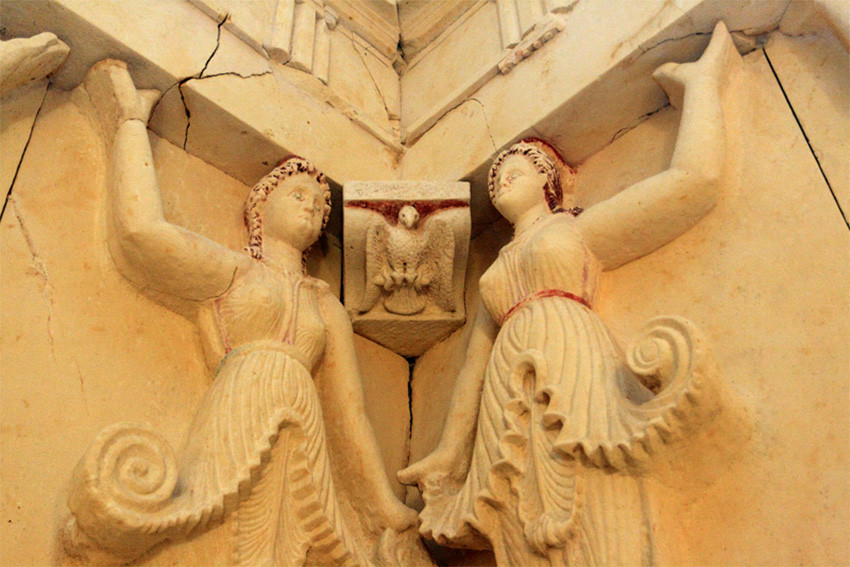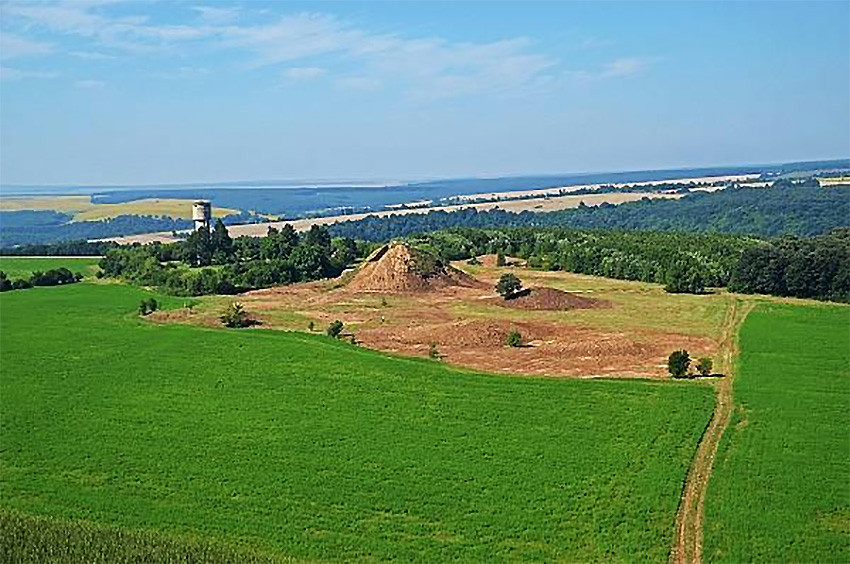The name Sboryanovo comes from “sbor” (gathering), and for a good reason – for millennia this place has been a meeting place of different civilizations and ethnicities, as evidenced by the remnants of over 140 cultural monuments.
Some of them have been studied, restored and are accessible to tourists. But others are still a mystery to science and capture the imagination of explorers and travellers.
In 1934 Hungarian archaeologist prof. Géza Fehér (1890-1955) started the first archaeological excavations in the area. While exploring several mounds near the village of Sveshtari in north-eastern Bulgaria, he dug out some magnificent gold appliqués which are today part of the exposition of the Ruse History Museum.

But the turning point came in 1982, when researchers discovered the so-called Thracian royal tomb with caryatids. The walls of its central chamber are covered with relief images of 10 caryatids - symbols of the Great Mother Goddess. "The tomb was built in the 3rd century BC to be the eternal home in the afterlife of a Getae ruler and his wife," says Maria Nikolaeva, deputy director of the Isperih History Museum.

"The tomb’s architecture is very interesting with its side room and exquisite domes. The decoration is a masterpiece: itis consists both of sculptures and frescoes. So three years after it was discovered, it was declared a World Heritage Site under the auspices of UNESCO. This year marks the 40th anniversary of the tomb's discovery."
The Thracian royal tomb was located within the boundaries of Helis, the glamorous capital of the Thracian tribe of Getae. According to some researchers, their ruler Dromichaetes was buried there. But in the 3rd century BC, a devastating earthquake razed the city to the ground, leaving only parts of the high city walls and shreds and ruins of two large mound necropolises, with remnants of rich burials, as the only evidence of Helis' former grandeur.

Today, the rounded shape of one of the highest mounds in Bulgaria, known as the Big Svishtar Mound, stands out. Inside it archaeologists have found a tomb dating back to the 4th century B.C.
"In 2012 archaeologists discovered in the mound a gold hoard of 264 objects, jewellery and appliqués weighing a total of 1,800 kg. They were placed in a wooden coffin which had formed a cavity in the stone soil ground of the tumulus," says Maria Nikolaeva.

In the 16th century, on the ruins of a Thracian shrine that once served the city of Helis, emerged a new tomb – of the Alevi spiritual leader Demir Baba, a wise man and healer.
"According to legend one year it was a severe drought. The saint dug into a rock, and from there gushed a miraculous spring near the türbe, which is the Turkish word for "tomb," Maria Nikolaeva says, adding:
"The türbe is a stone building with an anteroom and a burial chamber. The antechamber is painted with drawings and many texts in Arabic, with colourful images in praise of Ali, of Muhammad and of Allah. The wooden sarcophagus of Demir Baba is in the burial chamber.

To this day, people visit it to pay their respects to the saint. They leave offerings and pray for health and well-being," Maria Nikolaeva says.
Photos: Isperih History Museum
English version: Elizabeth Radkova
From 16 September, the History Museum in Panagyurishte will be hosting the original Panagyurishte Gold Treasure. The priceless find will be displayed in the museum’s secure vault hall, where it can be seen until October 23. The treasure will be on..
On September 14, the Bulgarian Orthodox Church bows down before the cross on which Jesus Christ was crucified . The Exaltation of the Holy Cross of the Lord or Cross Day is one of the 12 great Christian holidays. It is one of the four days..
Today, Bulgaria celebrates the 140th anniversary of the Unification of the Principality of Bulgaria and Eastern Rumelia. The center of the festivities is Plovdiv, where on this day in 1885, after the entry of the Golyamo Konare detachment into the..

+359 2 9336 661
